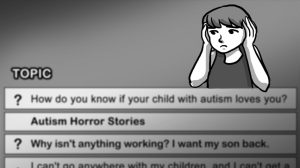Originally published on Daily Dot and republished here with their permission.

Source: iStock
It’s not everyday you get parenting advice from a man worth nearly $36 billion. But that’s exactly what happened to Darlene Hackemer Loretto, who responded to a Facebook post from Mark Zuckerberg announcing his desire to build a home run by artificial intelligence.
“I keep telling my granddaughters to date the nerd in school,” wrote the well-intentioned Loretto. “He may turn out to be a Mark Zuckerberg!”
Zuckerberg, perhaps conscious of his company’s abysmal gender diversity, responded in an uplifting and surprising way:
“Even better would be to encourage them to ‘be’ the nerd in their school,” Zuckerberg responded, “so they can be the next successful inventor!”
These are more than just words from the Facebook CEO and new father. After publishing a diversity report that found 69 percent of Facebook employees are male, the social media giant unveiled an ambitious plan to improve its hiring practices and university outreach to bring in a more diverse workforce.
This includes a network of over 200 colleges to help build “Lean In Communities” of female STEM majors to foster a friendlier atmosphere (referring to the controversial phrase coined by Facebook COO Sheryl Sandberg urging women to be more assertive at work).
Building groups of female engineers and coders is a surprisingly important step in changing the demographics of Silicon Valley. In recent years, numerous name-brand tech companies—such as Google and Twitter—have disclosed gender and racial diversity numbers that are far lower than one might expect from such a traditionally progressive sector of the economy.
At Google, women hold only 30 percent of all jobs and Twitter isn’t much better. At older tech companies, like Microsoft and Intel, the ratio is more like one woman for every four men.
Even though women make up more than half the total workforce, according to the Department of Commerce, they only hold one quarter of STEM-related jobs.
The reasons for the disparity are various and complex, but can generally be narrowed down to the idea that “girls can’t be nerds.” That might seem like oversimplifying the issue, but it’s why Zuckerberg’s words of encouragement are so powerful.
According to a report by the American Association of University Women, one of the key factors holding women back in STEM fields is the belief by both men and women that female students underperform in math and related fields.
According to the AAUW report, “girls assess their mathematical abilities lower than do boys with similar mathematical achievements.” So even in academic environments where male and female students are performing at equal levels, women still see themselves as doing less well than their male counterparts.
“By emphasizing that girls and boys achieve equally well in math and science,” the report says, “parents and teachers can encourage girls to assess their skills more accurately.”
This false sense of underperformance leads to the gender gap seen across the technology industry. According to a study last year from the Organization for Economic Development, girls who perform as well as boys on assessment tests are less likely to express interest in a STEM-related career.
According to the OECD, much of this is caused by a lack of parental encouragement – parents in countries with high gender gaps in STEM industries were more likely to doubt their daughter would or could perform in one.
So why can’t girls be the nerd? This stupefying belief is a key factor holding back young women from pursuing careers in technology and is leading to the largely male tech sector we see today. The highest indicator of a future engineer is an early interest in STEM classes starting as young as middle school, yet only 2,100 of the 42,000 high schools in the US offer AP Computer Science courses.
Of these, very few female, hispanic, or black students end up taking the exam – in 2014, the entire state of Montana saw only white males take the AP Computer Science exam.
The earlier any demographic of student confronts computer science, the more likely they are to pursue STEM fields. This is why, over the last few years, groups like Code Academy and Girls Who Code have fought to make basic coding classes available to students as early as kindergarten.
Researchers of the gender and racial gaps in the tech sector often speak of the “leaky pipeline” – women and minorities gradually leave the academic path towards tech careers and find it more difficult to start late rather than early.
According to a Duke University study from last year, however, such a gap in persistence rates no longer exists, if it ever existed. This is encouraging news for obvious reasons, but also because it means an early push towards STEM fields is more likely to “stick” with young women, furthering the likelihood they will pursue such options in college and in their search for a career.
This is not to say young girls must simply believe in themselves – it is the job of parents and educators to give female students the confidence they, too, can do whatever a boy can do.
The lack of self-confidence that drives women away from tech fields is a cultural problem – a study from the American Economic Association found female second-generation immigrant children with parents from countries with more gender disparity underperformed when compared to their male counterparts.
The US perpetuates this problem the more we implicitly and explicitly point girls away from the career fields most likely to earn more and offer more opportunity.
The first steps towards letting girls “be the nerd,” as Zuckerberg encourages, is making sure they have the option at all by expanding both coding and AP Computer Science courses nationwide – yet despite recent high-profile pushes for more opportunities, only one in ten schools offer computer programming courses.
But the belief that women will underperform in STEM fields holds women back, gender discrimination in Silicon Valley is storied and prolific—and it begins in academia.
According to a 2012 report from Yale University, male and female professors were more likely to underrate female candidates for graduate and postgraduate positions.
On top of its gender gap, Silicon Valley has become notorious for its “bro” culture, with numerous harassment and discrimination lawsuits rocking major tech companies like dating app Tinder and venture capitalist firm Kleiner Perkins.
Breaking up these false assumptions and poisoned workplace culture can help to equalize women’s involvement in the tech sector, but doing so starts with the girls themselves. Zuckerberg’s simple advice of encouragement is more than feel-good intentions – it’s a real piece of economic advice to help fight the gender bias throughout tech education.
Parents and educators can help fight the gender gap in the technology industry today by not just encouraging girls to “be the nerd,” but ensuring they have a path to make their nerdiness into a career.
Doing so will help diversify a stoically male industry and give women more opportunity to compete for the jobs of tomorrow.
***
To read more from Daily Dot, check out:
- How #365FeministSelfie has changed the lives of survivors of domestic violence
- OpenMinded is the online dating site to find a partner—or three
[do_widget id=’text-101′]
Gillian Branstetter is a social commentator with a focus on the intersection of technology, security, and politics. Her work has appeared in the Washington Post, Business Insider, Salon, the Week, and xoJane. She attended Pennsylvania State University. Follow her on Twitter @GillBranstetter.

Search our 3000+ articles!
Read our articles about:
Our online racial justice training
Used by hundreds of universities, non-profits, and businesses.
Click to learn more




















